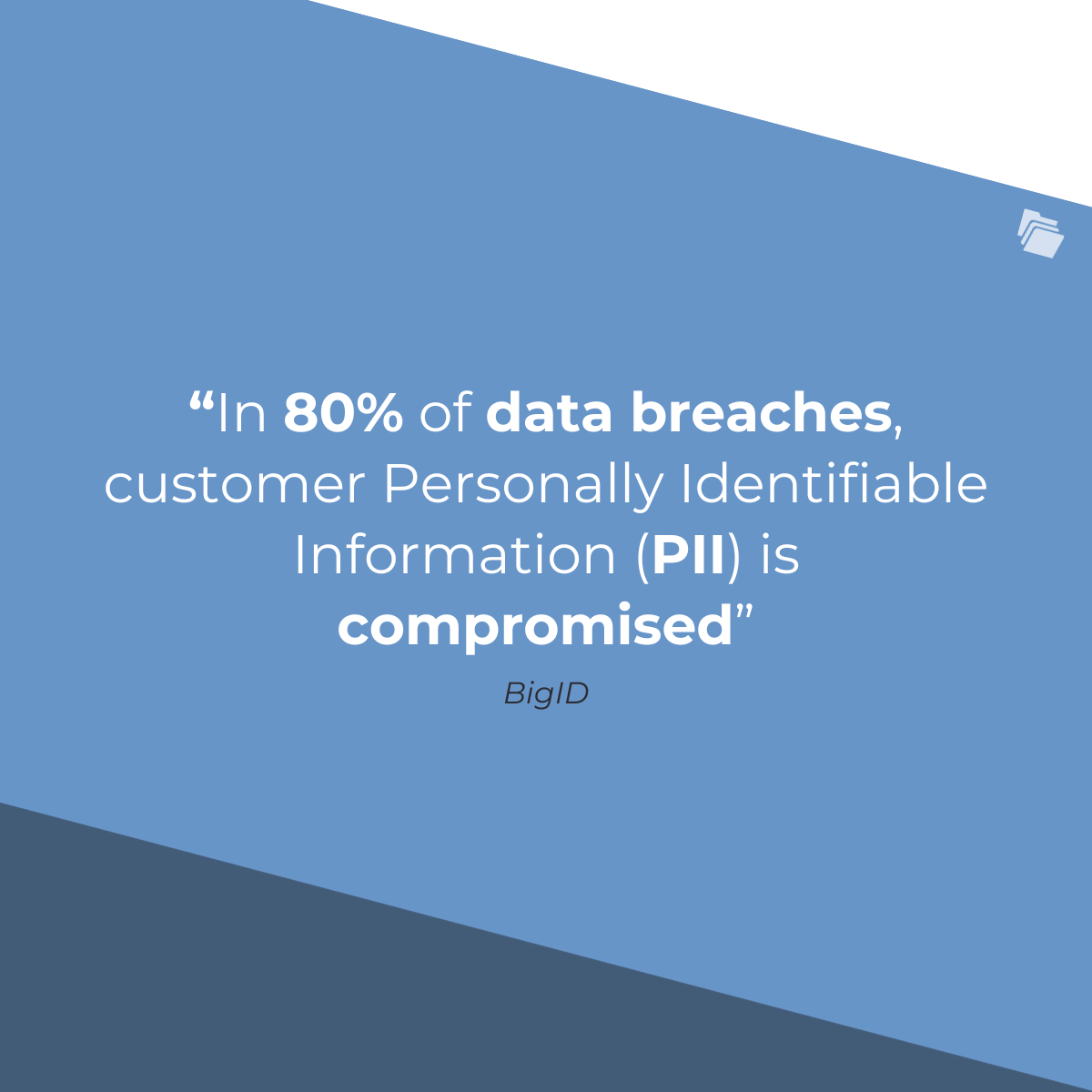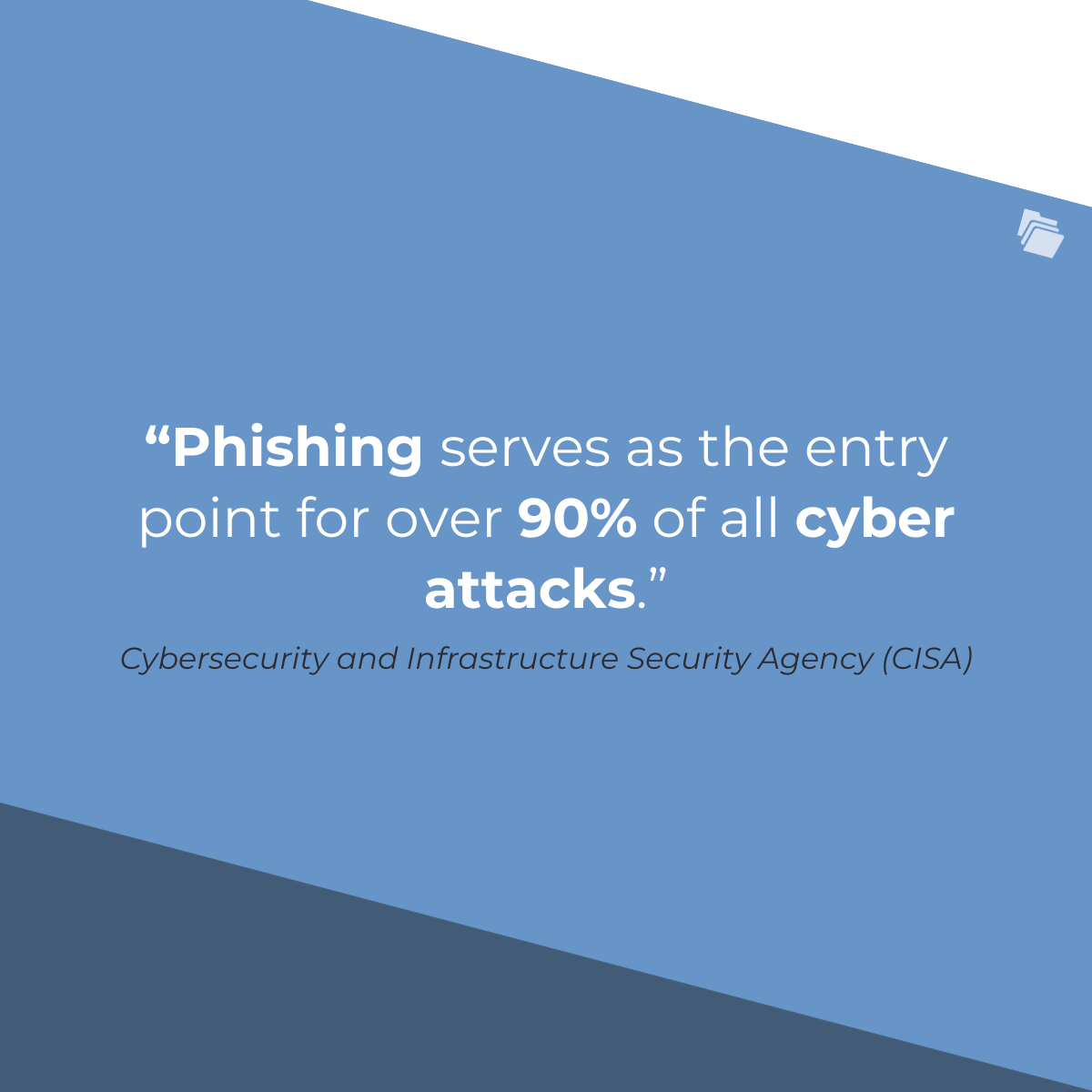For banks and financial service providers, every transaction and every document shared has the potential risk of data breaches, which can jeopardize both institutional reputation and client trust. As customer personally identifiable information (PII) has the highest rate of exposure in corporate data breaches — occurring in 80% of incidents — financial institutions must prioritize protecting their clients’ (PII) now more than ever. This guide explains what PII is and outlines three critical steps to enhancing PII security through processes and technologies.

The Urgency of Secure Document Collection for Financial Services
Financial institutions are entrusted with a wealth of sensitive information daily. From bank account numbers to investment details, the data customers must disclose to financial services can easily become a gold mine for malicious actors if not properly secured. As cyber threats continue to evolve, the need for secure document collection in the financial sector is becoming more urgent.
In 2022, financial institutions reported the second-highest incident rate of data breaches by industry or sector, trailing only government offices and organizations globally. Estimates of the total number of consumer records breached in the industry in 2022 exceed 254 million. Failing to adopt stringent security measures can result in hefty penalties, damage to brand reputation, and loss of client trust. Organizations that collect and use PII must be proactive in developing effective safeguards against emerging threats.
What Is Personally Identifiable Information (PII)?
PII refers to data that a third party can leverage to uniquely identify an individual. PII includes singular data points like an individual's name or passport number and other multiple pieces of information that, when combined, can distinguish one person from another.
Financial institutions collect PII as part of required know your customer (KYC) protocols when setting up customer accounts for recurrent payments or multifactor authentication. Common types of PII in financial services are:
- Names
- Home addresses
- Social Security numbers
- Account and credit card numbers
- Identification numbers such as passport and driver’s license
- Phone numbers
- Date of birth
- Fingerprints
Additionally, certain less direct identifiers in combination can also serve as PII. Examples of potential PII include a person’s:
- Place of birth
- Employer
- Business contact information
- Demographic data
Mishandling or exposing PII can lead to significant repercussions, such as identity theft, financial fraud, and other grave crimes. These breaches jeopardize customers’ security and can also result in severe financial and reputational losses for institutions.
In the U.S., the General Services Administration (GSA) provides guidance for PII. Though the GSA does not present an exhaustive list of PII types — due to evolving technological landscapes — the organization emphasizes that any data, either standalone or in combination with other details, which can be traced back to an individual's identity, potentially qualifies as PII.
Keeping Client Information Secure: 3 Critical Steps
Given the gravity of PII exposure, banks and financial service providers must develop proactive, preventative policies and practices to minimize risk and give customers confidence in disclosing sensitive information. These three steps are essential for effective cyber and information security.
1. Enforce Know Your Customer (KYC) Compliance
Mandated KYC processes help financial institutions validate the identities of customers and the authenticity of the documentation they submit to access financial services. Properly employed, KYC processes prevent many fraudulent activities, ensuring that only genuine clients gain access to services and resources.
Because financial institutions process vast amounts of PII under time-sensitive constraints, the bank’s staff and its clients may often view KYC processes as a procedural hurdle or inconvenience to get past. However, given the potentially harmful consequences at stake, institutions must enforce KYC procedures to ensure that only genuine clients can obtain funds and services or alter account information. Implementing robust KYC processes further ensures banks do not unknowingly aid in any illicit activities, such as money laundering or fraud.
2. Protect PII from Vulnerable Breach Points Like Email
While email remains an essential communication tool for most businesses, its use in PII collection poses an unjustifiable risk to customers and financial institutions. Data breaches are on the rise across industries and email is the most common first line of failure, accounting for 90% of successful attacks and exploits.

Common email-based attack vectors include:
- Phishing scams
- Spoofed emails or domain names,
- Man-in-the-middle schemes
To mitigate these risks, financial institutions should invest in alternative means of collecting client PII, such as encrypted client document portals. These portals, unlike email attachments, have built-in cyber and information security measures, including end-to-end encryption for both transiting and stored data and detailed access controls and user-provisions.
3. Develop Robust PII Handling Protocols
The secure handling of PII involves protecting it during transmission, storage, access, and management. As such, effective PII handling protocols integrate people, processes, and technologies. On the physical end, restricted access zones, monitored environments, and secure storage solutions prevent unauthorized personnel from accessing sensitive data. Security teams responsible for these technologies must also implement multi-tiered access controls and regular software updates, and enforce staff encryption use. These measures combined with regular audits and reviews ensure institutions stay ahead of the ever-changing cyber threat landscape and prevent common data breach modes.

Employee Training and Awareness
Employee training and awareness play a pivotal role in ensuring the secure handling of sensitive client information. An unaware employee can inadvertently become the weakest link in the chain, leading to potential breaches.
Financial institutions should conduct regular training sessions to keep employees informed of the latest threats and best practices. Because processes like KYC and customer due diligence (CDD) are repetitive and time-sensitive, it can be tempting for employees to cut corners or assume that they can easily recognize malicious activity. However, even security-savvy organizations and employees can fall for well-designed exploits, as evidenced by the breaching of millions of sensitive records — belonging to more than 130 companies — from the identity access firm Okta in August of 2022. In this breach, the attackers used employee email addresses and phone numbers to elicit multifactor authentication (MFA) credentials and gain access to high-level accounts.
FileInvite: Technology to Enhance Information Security Practices
While the coordination of people, processes, and technology required to create a robust information security posture is complex, some steps along the way are simple. The document collection and file-sharing platform FileInvite provides a structured, encrypted, and controlled environment for sharing and managing sensitive PII. FileInvite radically reduces the chances of data interception and unauthorized access by replacing email as the medium of exchange. Additionally, the platform’s document portal incorporates state-of-the-art security features like MFA credentialing, audit trails, and time-limited access. With FileInvite in place, financial institutions have a game-changing failsafe against many common types of employee negligence in handling PII.
A More Secure Document Collection Process with FileInvite
While FileInvite’s security features like end-to-end encryption and SOC 2 Type 2 compliance give financial institutions the tools they need to implement effective data protections, the platform also streamlines and enhances the customer experience. Traditional document collection methods like hard copy and email require clients and their representatives to maintain a tedious — and often redundant — back-and-forth to confirm the receipt and validation of documentation.
FileInvite eliminates this hassle and gives both financial institutions and their customers complete visibility into the status of KYC and other loan application processes. FileInvite is an unrivaled single-point solution to the technological challenges of protecting PII while ensuring customer satisfaction with efficiency and security.
To learn more and request a demo, visit FileInvite today.

Related Posts: